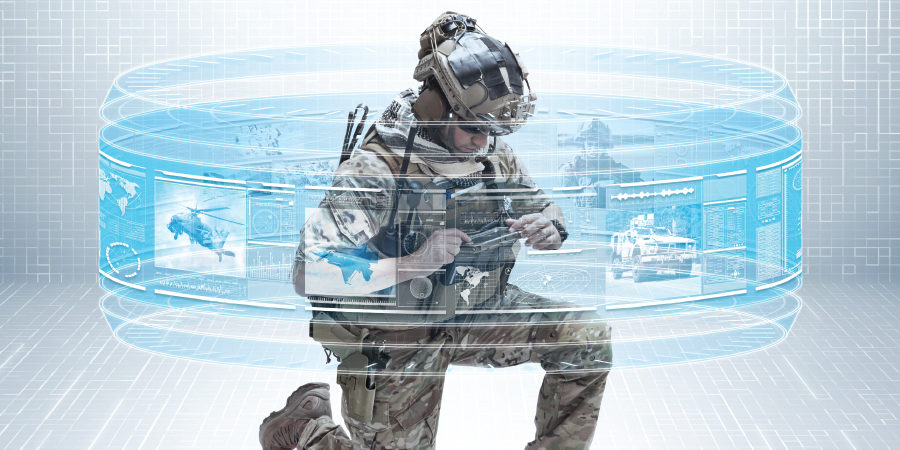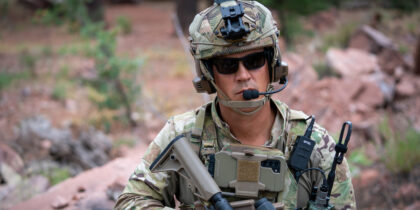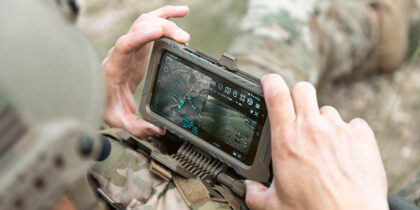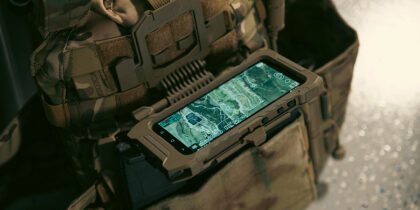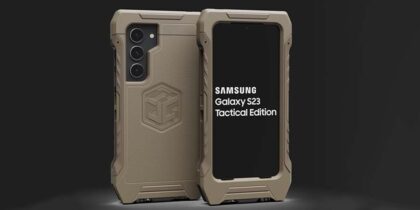On the battlefield, soldiers and commanders used to primarily communicate with tactical radios. New end-user devices (EUDs) — smartphones in particular — provide faster, more reliable communications, as well as situational awareness, digitally aided close air support and more. But to make this work, the network needs to support multiple channels that act as a unified communications system — so soldiers can focus on the mission, not on the network.
Secure smartphone communications
The most utilized and most secure method is to tether the smartphones to tactical radios that use encrypted, jam-resistant networks. But alternatively, you can ensure secure communications by using phones’ cellular 4G/5G capability in conjunction with voice, data encryption and encrypted tunnels.
These two formerly distinct approaches help create a more comprehensive communications ecosystem. Cellular connectivity won’t always be available in contested or off-grid environments. But with emerging technologies like smart network communications hubs and advanced network aware solutions, smartphones can be bridged with other communications assets, including tactical radios, satellite communications and other secure, private wireless networks. In these adverse situations, Primary, Alternate, Contingency and Emergency (PACE) communications channels can be switched and bonded to maintain communications in challenging environments.
Enhance critical incident response with mobile
Learn how to execute safer, more effective incident response with a mobile-first approach. Download Now
Let’s say that smartphone cellular connections are a primary means of battlefield communication. If that channel is denied or degrades significantly, the device can switch to Wi-Fi. If the Wi-Fi becomes unreliable, the phone can then leverage a wired connection (via USB) to a tactical, wireless mesh network (MANET) or other radio attached to the communications network.
But there’s a caveat to this always-on connectivity. Smartphones are designed to seek out and connect to Wi-Fi networks, cellular and Bluetooth and near-field communication (NFC) devices. This is beneficial in garrison and when the network’s secure, but it adds tremendous risk in the tactical space on two fronts: First, troops and technology assets can be located by the mere presence of communication signals, and second, adversaries can use these phone connections to launch cyberattacks.
The answer to these challenges is a purpose-built solution that addresses the communications and situational awareness needs of those on the battlefield, as well as the cybersecurity demands of the mission.
Designed for the battlefield
Samsung’s Galaxy S20 Tactical Edition was developed for the specific challenges of battlefield communications, with features that support enhanced functionality as well as augmented security through Samsung Knox. The Tactical Edition application programming interfaces (APIs) allow granular control of critical aspects of the device. Building on this, Viasat’s Mobile Dynamic Defense (MDD) device management solution provides easy, logical control of the phone’s communication functionality, so you can shut down all connections, including e911 and GPS signals — effectively hiding the device from adversaries.
Viasat MDD and the Galaxy S20 Tactical Edition work in tandem to enable critical capabilities, such as establishing security policy settings, as well as loading and updating applications, certificates and map data without needing to attach to a network. In fact, if the phone is compromised or attacked, MDD uses Knox and the Galaxy S20 Tactical Edition’s enhanced capabilities to protect the device — even without a network connection.
Galaxy S20 Tactical Edition phones and Viasat’s MDD are designed and continually optimized with government and tactical operations in mind. The knowledge and experience that Viasat provides ensures that decision makers have a turnkey solution supported by a team of engineers and former operators who understand — and prioritize — the people on the battlefield and their mission.
Get your free guide to mission-ready mobile solutions built for the hyper-enabled operator. And find out more about how enhanced situational awareness connects and enables operators.
